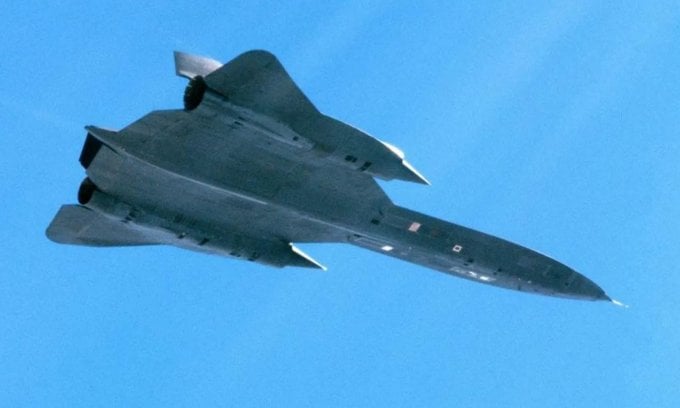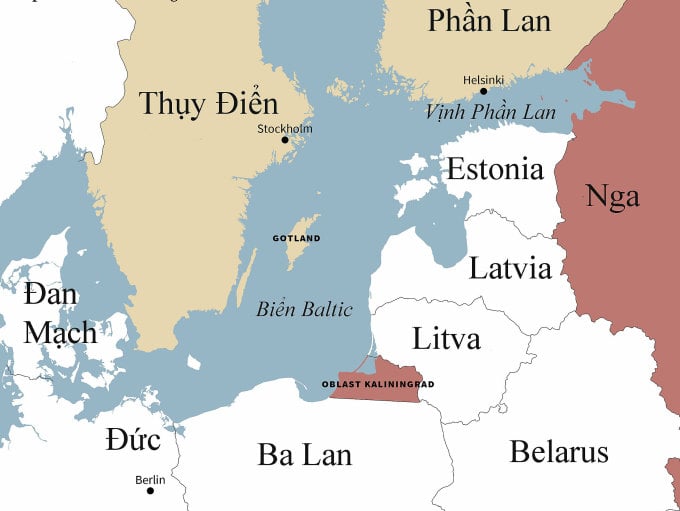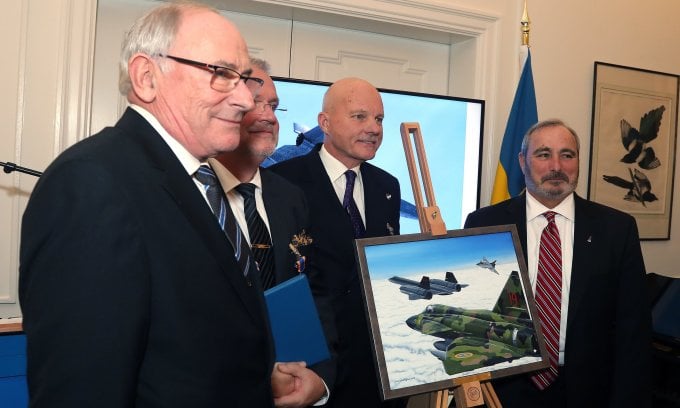An American SR-71 reconnaissance plane encountered problems over the Baltic in June 1987, was escorted by Swedish fighters and prevented from approaching by Soviet fighters.
In March, Sweden became a member of the NATO military alliance, ending its years-long policy of neutrality.
During the Cold War, the Swedish Air Force regularly dispatched fighter jets to intercept and monitor aircraft from both NATO and the Warsaw Pact approaching its airspace, in order to ensure Stockholm's military neutrality.
One of the most notable encounters took place in 1987, when an American SR-71 supersonic reconnaissance plane suffered engine failure and was escorted by Swedish Saab 37 Viggen fighter squadrons until it returned to NATO airspace.

SR-71 aircraft seen from a Swedish fighter jet during the incident on June 29, 1987. Photo: Swedish Air Force
The SR-71 Blackbird is a strategic reconnaissance aircraft capable of flying at an altitude of nearly 27 km at a speed of nearly 3,700 km/h, and was put into service by the US in 1966.
The US Air Force deployed SR-71s to many areas of the world , with operations in Europe being handled by a unit based at Mildenhall Air Base in the UK. The SR-71 squadrons there flew a fixed route known as the "Baltic Express", allowing them to operate in international airspace over the Baltic Sea and spy on the activities of the Soviet Navy's Northern Fleet.
Its high speed and cruising altitude made it immune to all air defense systems in the world at that time, with only a few high-speed Soviet fighters capable of approaching this type of aircraft.
Moscow often used Su-15, MiG-21 and MiG-23 fighters based in the Baltic states to pursue the SR-71, but the biggest threat was the squadron of MiG-25PD heavy fighters stationed at East Germany's Finow-Eberswalde base.
During each intercept, the Soviets would send a MiG-25 to close in on the SR-71 as it slowed down and left the Baltic Sea. The Blackbird would typically fly at an altitude of 70,000 feet, while the MiG-25 would accelerate to an altitude of 65,000 feet, maintaining a distance of exactly 1.9 miles behind the target before returning to base. This was believed to be a simulated sign that the MiG-25 had locked on and shot down the SR-71 in combat.

Baltic Sea countries. Graphic: SWP
On June 29, 1987, the SR-71 with a crew of Duane Noll and Tom Veltri was flying the "Baltic Express" route when the right engine suddenly exploded. The crew had to slow down, descend from 26 km to 8 km, and divert to make an emergency landing in West Germany. This also forced them to enter Swedish airspace without permission.
Two JA-37 interceptors, which were training over the Baltic Sea and were not carrying weapons, were dispatched to monitor the SR-71. Two AJ-37 fighters on air defense duty were also urgently dispatched to the area.
At the same time, the Soviet Air Force also dispatched a MiG-25PD to intercept, ready to force the SR-71 to land with the threat of shooting down the target. About 20 other fighters also took off within the next few minutes with a similar mission.
However, the JA-37 squadron detected and approached the SR-71 first, then began escorting the American aircraft through Swedish airspace. The presence of the Viggen squadron became a deterrent, preventing Soviet fighters from entering Swedish airspace to pursue the SR-71.
"We didn't know which side would find us first. Seeing the Swedish planes escorting us was a great relief. I'm sure their presence kept the other planes at bay and prevented them from getting close to us," recalled Veltri, the pilot of the SR-71.
The JA-37s left only when they were low on fuel, and were replaced by two armed AJ-37s. The Swedish fighters escorted the SR-71 until it entered the airspace of Denmark, a NATO member. The US aircraft then landed safely at Nordholz Air Base in West Germany.

Four Swedish pilots were awarded medals at a ceremony in Stockholm on November 28, 2018. Photo: US Embassy in Sweden
Information about the encounter was kept secret until November 28, 2018, when the US Air Force held a special ceremony in the Swedish capital Stockholm to award medals to four Viggen pilots who had participated in the SR-71 escort mission more than 30 years earlier.
"It was very difficult to slow down and approach the SR-71, which was flying at 550 km/h. We had to overtake it and then turn around. I moved closer to the right of the cockpit so that the crew could see the Swedish Air Force insignia, then kept a distance of one kilometer behind, while my teammates followed closely to take pictures. It was hard to imagine flying so close to such an impressive and beautiful machine," recalled Major Lars-Eric Blad, pilot of the AJ-37 fighter.
Vu Anh (According to Aviation Geek, National Interest )
Source link


![[Photo] More than 17,000 candidates participate in the 2025 SPT Competency Assessment Test of Hanoi National University of Education](https://vphoto.vietnam.vn/thumb/1200x675/vietnam/resource/IMAGE/2025/5/17/e538d9a1636c407cbb211b314e6303fd)

![[Photo] Readers line up to visit the photo exhibition and receive a special publication commemorating the 135th birthday of President Ho Chi Minh at Nhan Dan Newspaper](https://vphoto.vietnam.vn/thumb/1200x675/vietnam/resource/IMAGE/2025/5/17/85b3197fc6bd43e6a9ee4db15101005b)


![[Photo] Prime Minister Pham Minh Chinh chairs meeting on science and technology development](https://vphoto.vietnam.vn/thumb/1200x675/vietnam/resource/IMAGE/2025/5/17/ae80dd74c384439789b12013c738a045)





























![[Photo] Nearly 3,000 students moved by stories about soldiers](https://vphoto.vietnam.vn/thumb/1200x675/vietnam/resource/IMAGE/2025/5/17/21da57c8241e42438b423eaa37215e0e)



































































Comment (0)